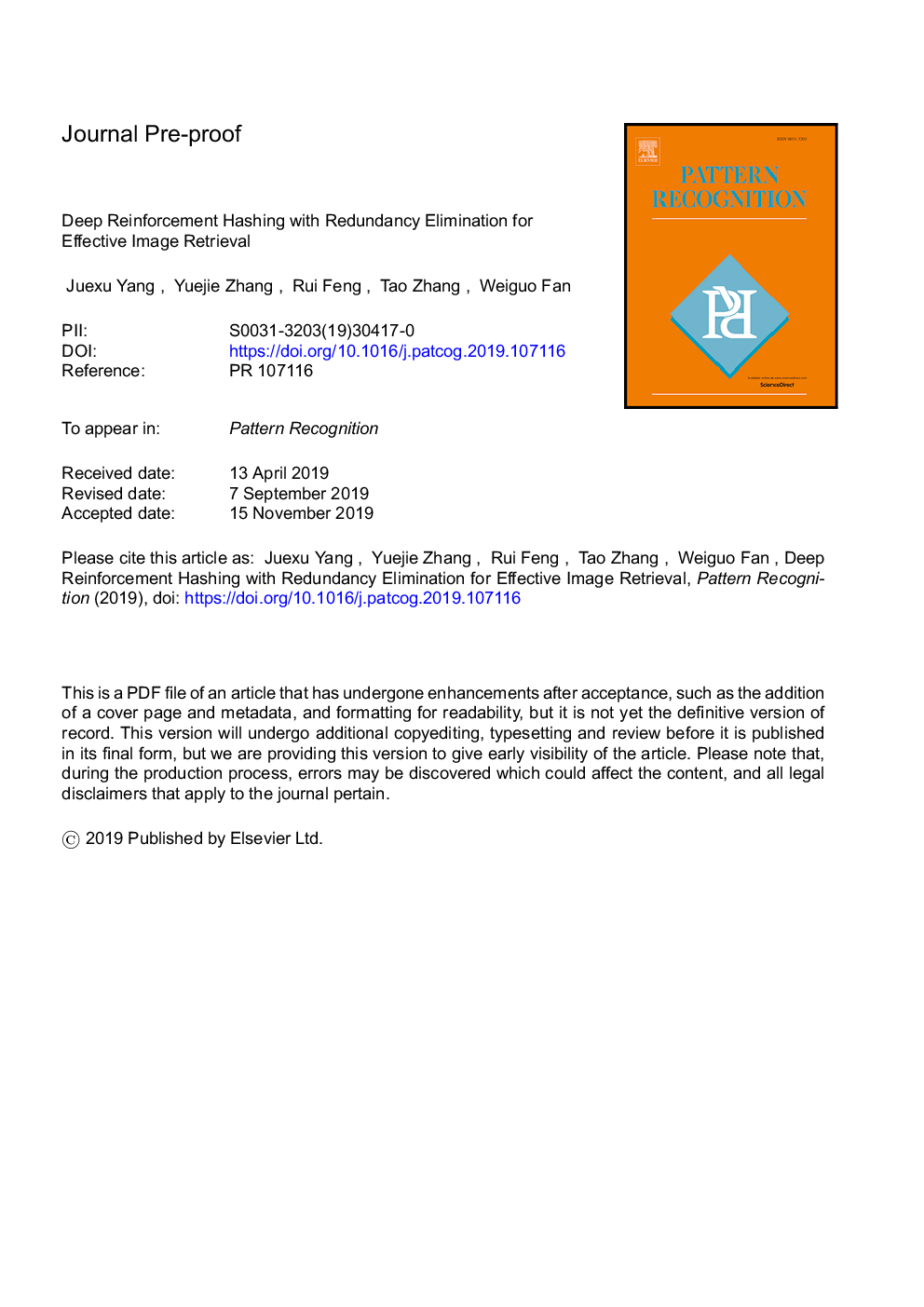| Article ID | Journal | Published Year | Pages | File Type |
|---|---|---|---|---|
| 13436546 | Pattern Recognition | 2020 | 39 Pages |
Abstract
Hashing is one of the most promising techniques in approximate nearest neighbor search due to its time efficiency and low cost in memory. Recently, with the help of deep learning, deep supervised hashing can perform representation learning and compact hash code learning jointly in an end-to-end style, and obtains better retrieval accuracy compared to non-deep methods. However, most deep hashing methods are trained with a pair-wise loss or triplet loss in a mini-batch style, which makes them inefficient at data sampling and cannot preserve the global similarity information. Besides that, many existing methods generate hash codes with redundant or even harmful bits, which is a waste of space and may lower the retrieval accuracy. In this paper, we propose a novel deep reinforcement hashing model with redundancy elimination called Deep Reinforcement De-Redundancy Hashing (DRDH), which can fully exploit large-scale similarity information and eliminate redundant hash bits with deep reinforcement learning. DRDH conducts hash code inference in a block-wise style, and uses Deep Q Network (DQN) to eliminate redundant bits. Very promising results have been achieved on four public datasets, i.e., CIFAR-10, NUS-WIDE, MS-COCO, and Open-Images-V4, which demonstrate that our method can generate highly compact hash codes and yield better retrieval performance than those of state-of-the-art methods.
Related Topics
Physical Sciences and Engineering
Computer Science
Computer Vision and Pattern Recognition
Authors
Juexu Yang, Yuejie Zhang, Rui Feng, Tao Zhang, Weiguo Fan,
